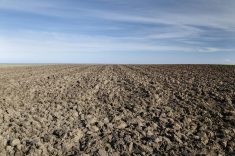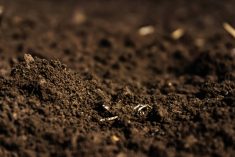There are a couple of ways to determine if winter wheat survived the winter, MAFRI says on its website.
One is waiting until the soil and crowns warm up and root growth starts. That could take until mid-May.
Another option is to extract several “sods” from the field and warm them inside. Keep the soil moist and assess crowns for new root growth after about five to seven days.
MAFRI says to sample from average and worst-case areas of the field (knolls, headlands with low-snow-trapping stubble levels, low spots where spring flooding or winter icing may have occurred).
Read Also

Manitoba sclerotinia picture mixed for 2025
Variations in weather and crop development in this year’s Manitoba canola fields make blanket sclerotinia outlooks hard to pin down
There’s also a new quick test used by Ducks Unlimited agronomists in North Dakota called the “bag test.”
Here’s what you do: Dig or chisel wheat seedlings out of the soil without damaging the crown. Rinse the soil off the crown and roots. Using scissors, trim off the roots and leaves and all but one inch of the stem above the crown. Put these crowns into a Zip-loc bag and puff in some air before sealing. Keep at room temperature and observe every two days.
Repeat the rinsing and air puffing every two days. Live plants will start to extend leaves and establish new white roots. If new growth is not seen in six days consider the plant dead.
A visual display of the procedure from Ducks Unlimited is at: http://www.wintercereals.us/Documents/Growing%20WW/winter_survival.pdf.



















